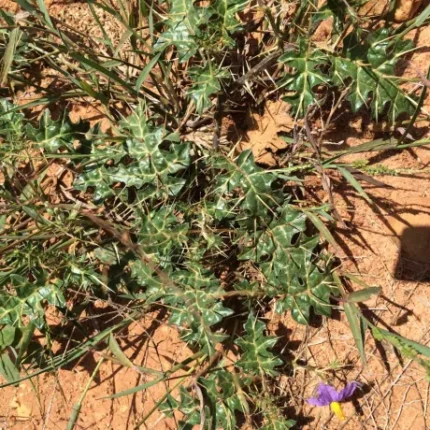The author is of the opinion that either Solanum torvum or S. ferox is to be considered as svetakantakari. The later one will be the suitable source since S. torvum is svetabrhati but not svetakantakari.
Botanical Description – This weed is a small, suberect, prickly, hairy herb 0.5 to 1.5 meters in height the leaves are ovate, 15 to 20 centimeters long, 12 to 23 centimeters wide, lobed at the margins, and densely covered with stiff woolly hairs above and woolly hairs and prickly spines on the nerves beneath; the lobes are triangular, and 2.5 to 4 centimeters deep. The flowers are borne on lateral racemes. The calyx is shortly funnel-shaped, with ovate- triangular lobes. The corolla is densely woolly without white, oblong-lobed, and 2 to 2.5 centimeters in length. The fruit (berry) is yellow, rounded, 2.5 to 3.5 centimeters in diameter, densely covered with needlike hairs, and many-seeded. It is found throughout the Philippines in waste places, old clearings, etc., at low and medium altitudes, ascending to 2,000 meters. It also occurs in India to southern China and Malaya.
Uses – In the Philippines the leaves are used as poultices for swellings. Burkill reports that a decoction of the roots is prescribed to give relief when there are violent pains all over the body and discomfort after meals. Burkill and Haniff mention a decoction taken for syphilis. They say that the roots are used externally in a bath for fever at night, and, in a poultice, for itches, cuts, wounds, and severe bruises. Burkill states that the seeds are used for treating toothache; they are burned and the fumes inhaled.





Reviews
There are no reviews yet.